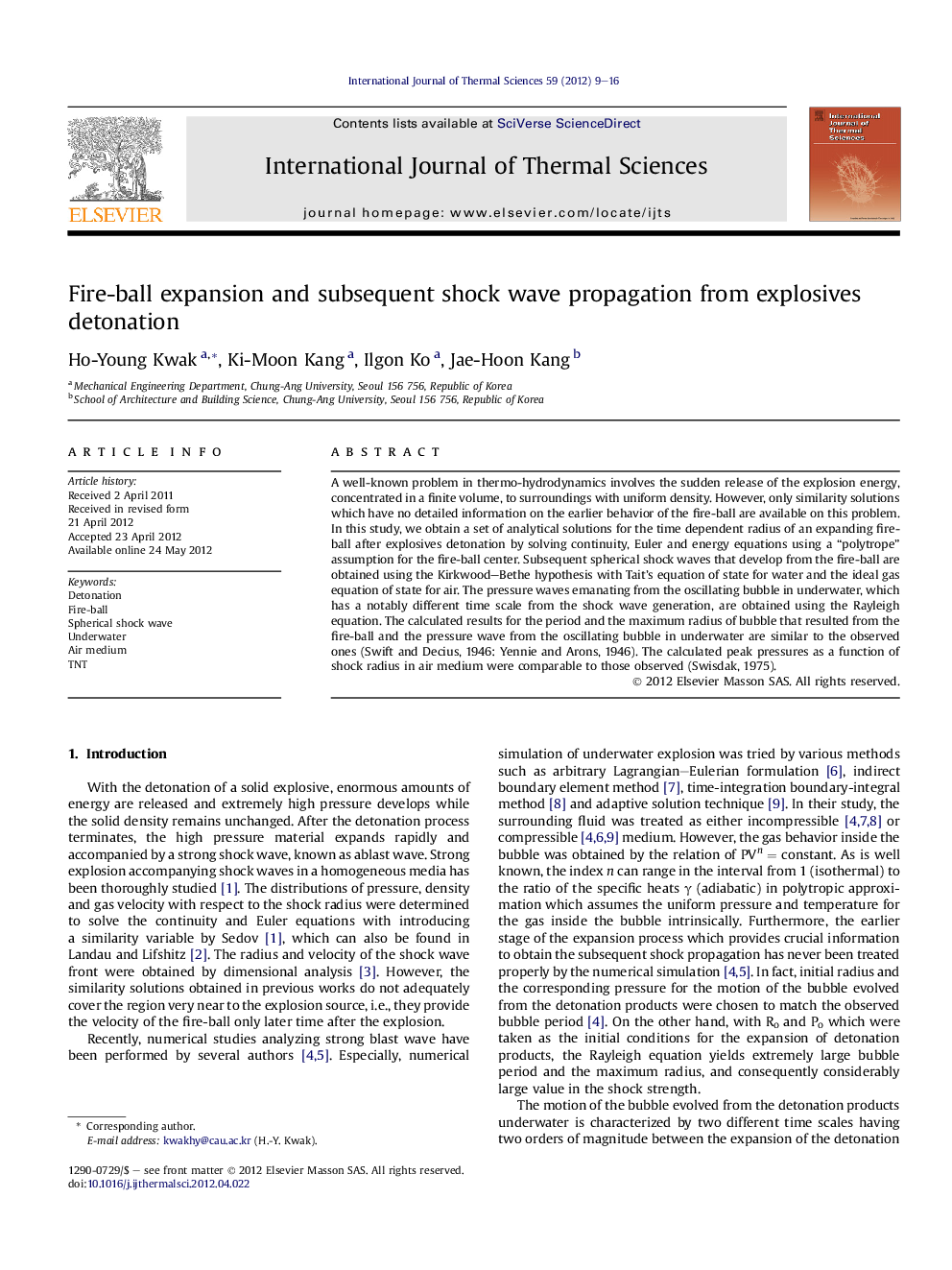| Article ID | Journal | Published Year | Pages | File Type |
|---|---|---|---|---|
| 668870 | International Journal of Thermal Sciences | 2012 | 8 Pages |
A well-known problem in thermo-hydrodynamics involves the sudden release of the explosion energy, concentrated in a finite volume, to surroundings with uniform density. However, only similarity solutions which have no detailed information on the earlier behavior of the fire-ball are available on this problem. In this study, we obtain a set of analytical solutions for the time dependent radius of an expanding fire-ball after explosives detonation by solving continuity, Euler and energy equations using a “polytrope” assumption for the fire-ball center. Subsequent spherical shock waves that develop from the fire-ball are obtained using the Kirkwood–Bethe hypothesis with Tait's equation of state for water and the ideal gas equation of state for air. The pressure waves emanating from the oscillating bubble in underwater, which has a notably different time scale from the shock wave generation, are obtained using the Rayleigh equation. The calculated results for the period and the maximum radius of bubble that resulted from the fire-ball and the pressure wave from the oscillating bubble in underwater are similar to the observed ones (Swift and Decius, 1946: Yennie and Arons, 1946). The calculated peak pressures as a function of shock radius in air medium were comparable to those observed (Swisdak, 1975).
► We obtained a set of analytical solutions for an expanding fire-ball. ► We have solved the continuity, Euler and energy equations for the fire-ball. ► Spherical shock waves were obtained using the Kirkwood–Bethe hypothesis. ► Calculated results for behavior of bubble in water were similar to observed ones. ► Calculated peak pressures of the shock in air were comparable to those observed.
